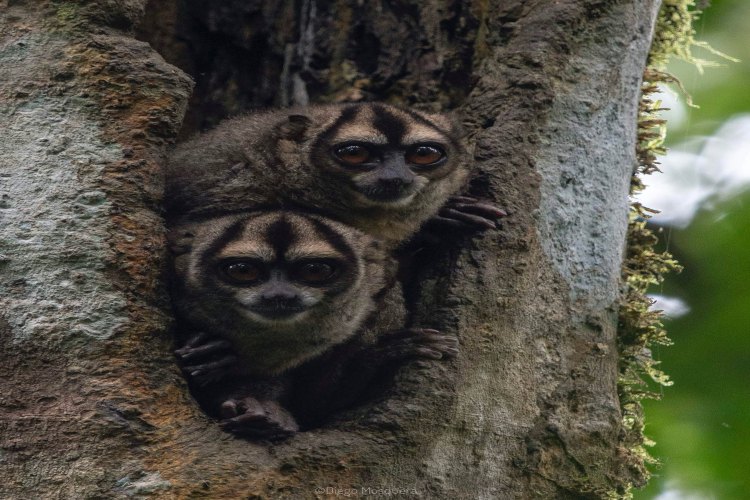DID YOU KNOW THAT SPIX´S MONKEYS ONLY WEIGH AROUND 1 kG?

“Did you know that spix’s night monkeys only weigh around 1 kg?" is an article published in the prestigious environmental website Mongabay, as a part of the “Candid Cam” series.
The footage that can be seen in the video was taken at Tiputini Biodiversity Station, where in 2019 a project was initiated using arboreal camera trapping in the canopy to unravel and monitor arboreal vertebrate species of Yasuní, an area documented as the most biodiverse on earth.
This project focused on documenting arboreal mammal species through photographs and videos, identifying their ecological traits, document their behavior, activity patterns and use of resources by different species. Since as many as three-quarters of all mammals in the tropics are considered at least partially arboreal, the forest canopy a critical sub-habitat that requires more research. In general, arboreal species are hard to spot due to their habits (they are nocturnal, elusive, cryptic, rare) and their ecology still remains poorly understood.
The first months of monitoring gave us a glimpse of the most common species that are found in the canopy and a better understanding of how they use the forest. Among them, we recorded the incredible Spix’s Night Monkey, a small-bodied monkey species that usually reaches around one kilogram on weight. This is a very adaptable species, and we were able to obtain records of them in both seasonally flooded and terra firme forests.
Their social behavior is group-primarily based, and as expected, we obtained videos of breeding pairs and their offspring. They were pretty active as soon as sundown took place, and always returned to their sleeping site earlier than dawn. Predictable, we noticed that they are more active with a full moon rather than with a brand-new moon, and they seem to move more when in moments when the evening had more moonlight. We still have so much to learn!
In this project the analyzed data will give us a better understanding of, for example, presence/ absence of arboreal species based on use of flowering or fruiting trees, their group composition, their use of arboreal strata, their spatial distribution and temporal variation and their activity patterns. With this, we hope to increase the knowledge of vertebrate species ecology in the canopy, which is valuable for management, particularly to assess its status with respect to threats, and help to develop management tools that can be used in areas with anthropogenic pressures.
